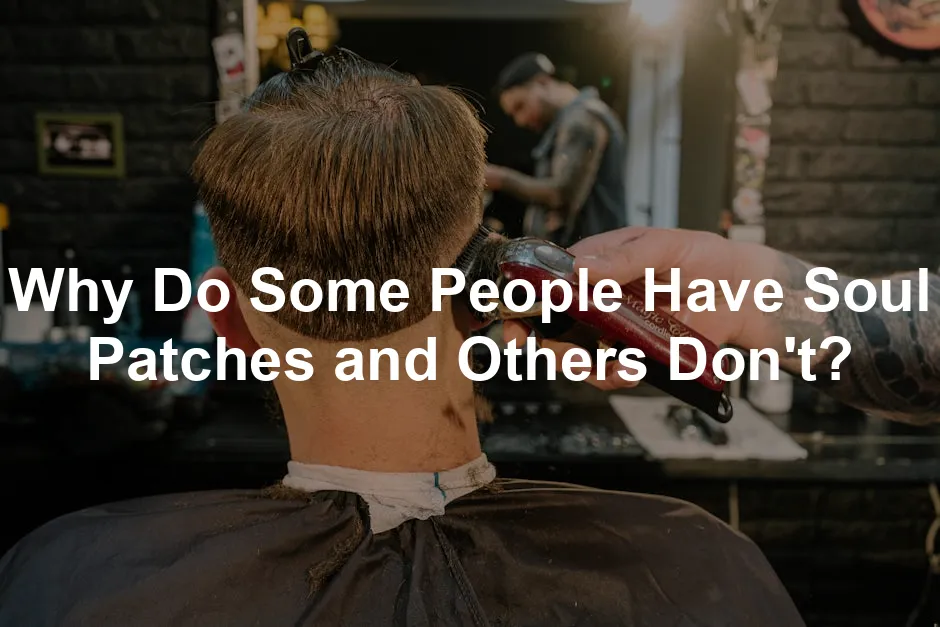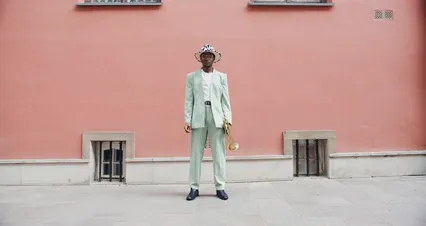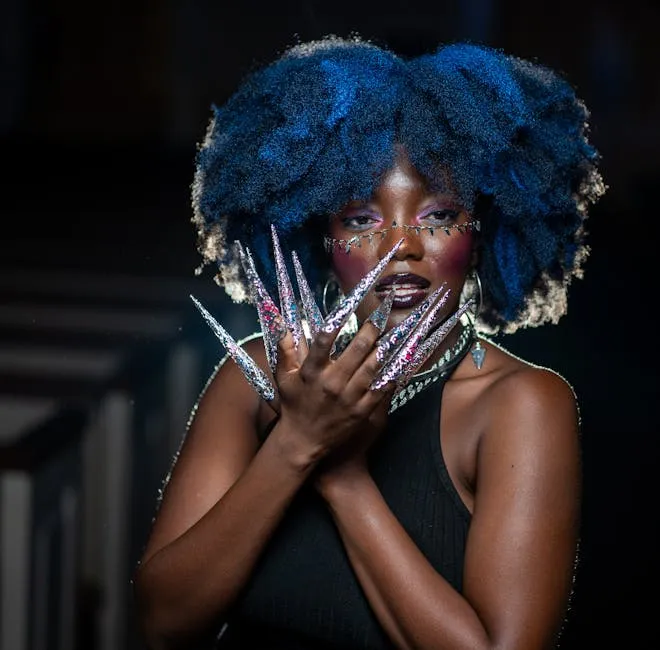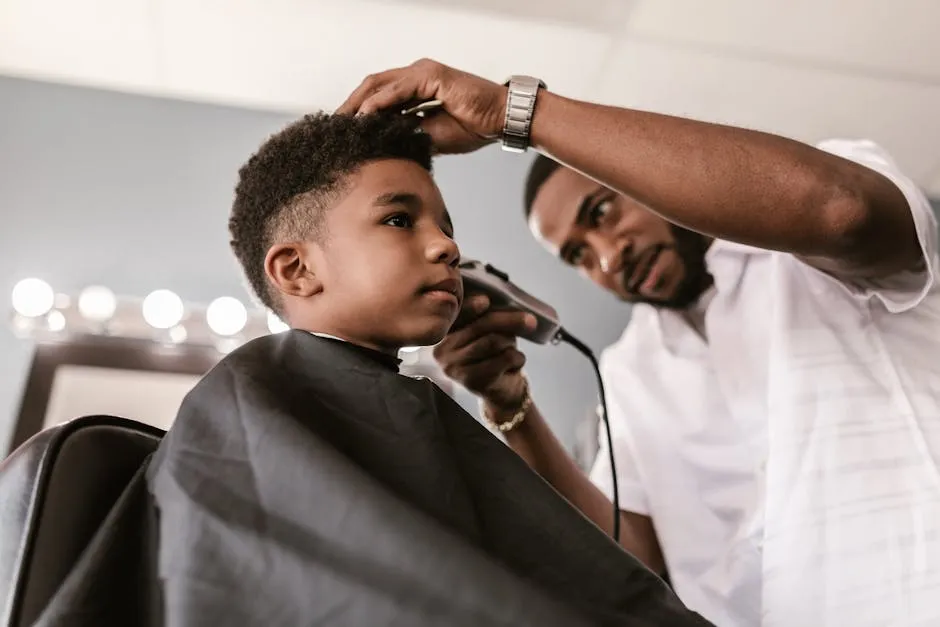
Why Do Some People Have Soul Patches and Others Don’t?
Introduction
A soul patch is a small tuft of hair below the lower lip. This unique facial feature carries significant cultural weight. It has been embraced and rejected by various groups over time. For some, it’s a badge of artistic flair; for others, it’s seen as outdated. Why do some individuals choose to sport a soul patch, while others steer clear? Let’s explore the reasons behind these personal grooming choices.
But hey, while you’re at it, why not keep that soul patch looking sharp with a Beard Grooming Kit? It’s got everything you need to keep your facial hair looking fabulous.
Summary and Overview
A soul patch is defined as a small patch of facial hair growing just beneath the lip. Its characteristics include being well-defined and often paired with a clean-shaven face. Historically, this style emerged from jazz culture, gaining fame through musicians like Dizzy Gillespie. In the 1950s, it became a symbol of rebellion, embraced by the beatniks and later, the hipster movement.

Today, perceptions of soul patches vary widely. Some view them as trendy, while others see them as relics of past decades. Influences from pop culture and social media can sway opinions, leading to fluctuations in popularity. Factors such as personal style, societal norms, and grooming preferences greatly impact whether someone opts for this unique facial hair style.
Ultimately, the soul patch remains a conversation starter, evoking strong opinions and personal stories. And speaking of stories, if you’re looking to craft your own personal style, a Men’s Fashion Book might just inspire your next look!
The Cultural Background of Soul Patches
Historical Significance
The soul patch is more than just facial hair. It has roots in jazz culture, gaining fame through the legendary musician Dizzy Gillespie. Known for his innovative trumpet style, Gillespie sported a soul patch to avoid irritation from his mouthpiece. This small tuft of hair became iconic in jazz circles during the 1940s and 1950s.

As the soul patch evolved, it found a home in the Beat Generation. Beatniks and artists embraced the style, reflecting their countercultural identity. This patch of hair symbolized rebellion against mainstream norms. The term “soul patch” officially surfaced in the late 1970s, replacing earlier nicknames like “jazz dab” and “jazz dot.”
Throughout the decades, the soul patch continued to shift with cultural trends. It became a hallmark of the hipster movement, representing a laid-back, creative vibe. This transformation highlights how cultural shifts influence personal grooming trends and identity.
Contemporary Perceptions
Today, the soul patch evokes mixed feelings. Some see it as a bold fashion choice, while others view it as outdated. Its association with various subcultures, like grunge and hipster, adds layers to its perception.

In modern society, celebrities play a significant role in shaping opinions about the soul patch. Many famous figures have donned this style, influencing trends through social media. Platforms like Instagram and TikTok showcase diverse styles, impacting personal grooming choices.
However, the soul patch also faces criticism. Some associate it with negative stereotypes or view it as a relic of the past. Despite this, many wearers embrace the soul patch as a unique expression of individuality. Ultimately, how society perceives the soul patch reveals much about cultural identity and personal style.
Factors Influencing the Decision to Have a Soul Patch
Personal Style and Expression
Facial hair is a canvas for self-expression. Many individuals choose styles like the soul patch to showcase their unique identity. This small tuft of hair can signal creativity, confidence, and individuality.

Psychologically, maintaining a soul patch can boost self-esteem. It reflects a personal brand that distinguishes wearers from the crowd. Think about how your appearance connects to your self-image. Are you drawn to traditional styles, or do you prefer to stand out? For some, a soul patch is a bold statement. It says, “I’m different.”
Fashion choices often evolve with personal growth. As you explore different looks, a soul patch might resonate with your journey. It’s not just hair; it’s part of who you are. Speaking of exploring looks, consider investing in a Men’s Skincare Set to keep your skin looking as fresh as your facial hair!
Societal Norms and Trends
Societal trends significantly shape the popularity of styles like the soul patch. What was once a symbol of rebellion can quickly become outdated. For example, the soul patch thrived in jazz culture and later among hipsters. Nowadays, perceptions can shift based on cultural dynamics.

Backlash against certain facial hair styles is common. Some may view the soul patch as unprofessional or dated. Peer influence also plays a role. If friends or celebrities embrace facial hair, trends can shift rapidly.
Media representation greatly impacts how styles are perceived. Iconic figures can elevate or diminish a look’s popularity. Consider how trends in masculinity evolve and influence personal grooming choices. The soul patch can either be a stylish choice or a fashion misstep, depending on the context. To keep it stylish, a good Facial Hair Wax might do the trick!
Maintenance and Grooming Preferences
Practical aspects of having a soul patch include grooming routines and upkeep. While some styles require significant maintenance, the soul patch often demands less. Regular trimming and shaping can keep it looking sharp.

Personal grooming preferences also affect the decision to sport a soul patch. Some enjoy the minimal upkeep, while others prefer more elaborate styles. Low-maintenance styles appeal to those with busy lifestyles.
Grooming products can enhance the look of a soul patch. Oils, balms, and combs can help maintain its shape and health. Understanding your grooming needs is crucial. A well-kept soul patch can be eye-catching and stylish, making it a worthwhile choice for many. And if you’re looking for some handy tools, don’t forget to check out Men’s Grooming Scissors to keep everything in check!
When Is a Soul Patch Seen as Attractive or Unattractive?
Gender Perspectives
Perceptions of soul patches vary greatly between genders, especially in dating. For many women, a soul patch might signal a laid-back attitude. However, it can also evoke negative stereotypes. A survey by the dating site Zoosk found that 66% of women preferred clean-shaven faces. In contrast, 31% found soul patches attractive. This shows how personal grooming choices can impact dating preferences.

Men often feel pressure to conform to societal expectations. Many believe a well-groomed appearance is essential for attraction. However, some men embrace a soul patch for individuality. The choice to sport this style can reflect a rejection of traditional masculinity. In a world of ever-changing trends, the soul patch stands out as a unique option.
Celebrity Influence
Celebrities significantly influence perceptions of the soul patch. Figures like Howie Mandel and Dizzy Gillespie made it popular. Their choices helped shape cultural views on this facial hair style. In the 90s, Luke Perry’s character in Buffy the Vampire Slayer revived interest in the soul patch. This resurgence linked it to a sense of coolness and rebellion.

However, not all celebrities have embraced the soul patch. Some public figures have faced backlash for sporting this style. This creates a mixed message about its attractiveness. In today’s media-driven world, opinions can shift rapidly. Social media amplifies trends, making celebrity endorsements crucial. Ultimately, the soul patch’s fate often rests in the hands of popular culture.
The Soul Patch in Popular Media
Film and Television Representation
Soul patches have made their mark in film and television. They often symbolize a character’s uniqueness or artistic flair. Take Dizzy Gillespie, for example. His iconic look established the soul patch as a cultural symbol tied to jazz.

In shows like Buffy the Vampire Slayer, Luke Perry’s character sported a soul patch, blending coolness with rebellion. This style often signifies nonconformity, appealing to those who wish to stand out. Characters with soul patches can evoke various emotions, from intrigue to humor.
Media trends influence how viewers perceive this facial hair. Characters like Frank Zappa in various portrayals further cement its cultural significance. The soul patch often represents a carefree attitude or creative spirit.
As these characters evolve, so does the soul patch’s relevance. It can spark conversations about identity and self-expression, reflecting broader cultural trends. And if you’re looking for a way to enhance that creative side, consider a Sketchbook for Artists to jot down your thoughts!
Social Media Impact
Social media platforms like Instagram and TikTok play a pivotal role in shaping perceptions of soul patches. Viral trends can inspire users to experiment with their grooming choices. Influencers often showcase their unique styles, encouraging followers to try new looks.

With hashtags like #SoulPatch, users share their experiences and styles. This user-generated content creates a community around the soul patch, making it more accessible and relatable. As trends shift, so do the opinions about this distinct facial hair.
Moreover, social media allows for rapid feedback. Comments can either praise or criticize the look. This immediate interaction can influence personal grooming choices significantly. And while you’re at it, don’t forget to check out some cool Stylish Sunglasses to complete your look!
Conclusion
The soul patch carries cultural significance, shaped by media portrayals and social media trends. Its presence reflects individuality and personal expression. As styles evolve, the soul patch remains a unique choice, inviting ongoing exploration and conversation.
To understand the cultural significance of the soul patch, consider why some people choose to have one and others do not. why do some people have soul patches and others dont
Please let us know what you think about our content by leaving a comment down below!
Thank you for reading till here 🙂
All images from Pexels




